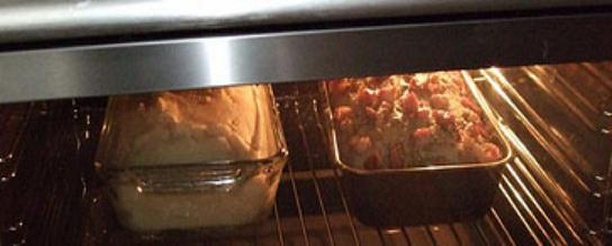















Learn About Sourdough
Media
Order Sourdough
Sourdough Baking Troubleshooting
Not Sour Enough
• Make sure the starter has been fed atleast a couple times immediately before using for
bread so that its active. An old, unfed starter will make a mild bread. Starter can be
fed/refreshed for baking and then stored in the fridge for up to 3 days, after that, you will
need to refresh and feed it again for it to be at full potency for baking. Refer to the
'Preparing Your Starter for Baking' section.
• Increase the length of time while rising the bread.
• More starter doesn't always equal more sour. It will likely cause the dough to rise too quickly, without giving it time to develop deeper and more tangy flavors. Time is key.
• Don't do less than 30% starter in a recipe - it needs 30-50% to work well.
• Try working with a smaller % of starter in the dough, and let the dough rise longer (preferably in the fridge overnight).
• Try adding the salt mid-way through the recipe, such as when you punch down and knead/shape for the second rise. Salt can inhibit the growth a bit.
• The starter may be overfed. This leads to it being a bit diluted and weak. Feed only after it has doubled to ensure you aren't overfeeding.
• If your bread is behaving correctly, and still not sour, use the fridge to slow it down, it usually does the trick!
• Somtimes a stiff starter (not much water) can make a mild bread, try adding more water and feeding it at a lower ratio before baking - such as 1:2:2 or 1:1:1. This point is slightly debated though, as some feel a stiff starter makes it more sour - experiment for yourself!
• Conversely, if you want a mild bread, just do the opposite of these suggestions!
• Increase the length of time while rising the bread.
• More starter doesn't always equal more sour. It will likely cause the dough to rise too quickly, without giving it time to develop deeper and more tangy flavors. Time is key.
• Don't do less than 30% starter in a recipe - it needs 30-50% to work well.
• Try working with a smaller % of starter in the dough, and let the dough rise longer (preferably in the fridge overnight).
• Try adding the salt mid-way through the recipe, such as when you punch down and knead/shape for the second rise. Salt can inhibit the growth a bit.
• The starter may be overfed. This leads to it being a bit diluted and weak. Feed only after it has doubled to ensure you aren't overfeeding.
• If your bread is behaving correctly, and still not sour, use the fridge to slow it down, it usually does the trick!
• Somtimes a stiff starter (not much water) can make a mild bread, try adding more water and feeding it at a lower ratio before baking - such as 1:2:2 or 1:1:1. This point is slightly debated though, as some feel a stiff starter makes it more sour - experiment for yourself!
• Conversely, if you want a mild bread, just do the opposite of these suggestions!
Flat Bread
• Too much liquid in the dough.
• Not enough gluten in the dough (this holds it, while the fermenation stretches it).
• It proofed for too long (past its 'doubling' point, and has begun to deflate).
• Not enough starter in the dough (but most recipes call for the right amount). Try using the fridge to develop flavor without overproofing the dough in the process.
• Use a specially shaped bowl or tin to help support the shape of the dough (ie, don't put it on a cookie sheet, most sourdough will spread out if allowed. Sourdough has less structure generally than conventional bread, and a shaping bowl during rising and baking can help.
• Not enough gluten in the dough (this holds it, while the fermenation stretches it).
• It proofed for too long (past its 'doubling' point, and has begun to deflate).
• Not enough starter in the dough (but most recipes call for the right amount). Try using the fridge to develop flavor without overproofing the dough in the process.
• Use a specially shaped bowl or tin to help support the shape of the dough (ie, don't put it on a cookie sheet, most sourdough will spread out if allowed. Sourdough has less structure generally than conventional bread, and a shaping bowl during rising and baking can help.
Pale Crust
• Pale crust is from over-proofing (sugars are needed to carmelize the crust, these are
depleted when over-proofed/fermented). It may also mean your oven isn't hot or humid
enough the first 5 minutes of baking. You can also add a glaze to help this.
Tight Crumb
• This is the nature of both whole grain breads and also dough that is too dry. Try
increasing the liquid - a wet crumb makes for big, irregular holes that most people are
after. Whole grain bread will still be much smaller in crumb than white though.
Copyright © 2015 Yemoos Nourishing Cultures. All rights reserved.
Shop | Forum | Blog | Contact Us




























